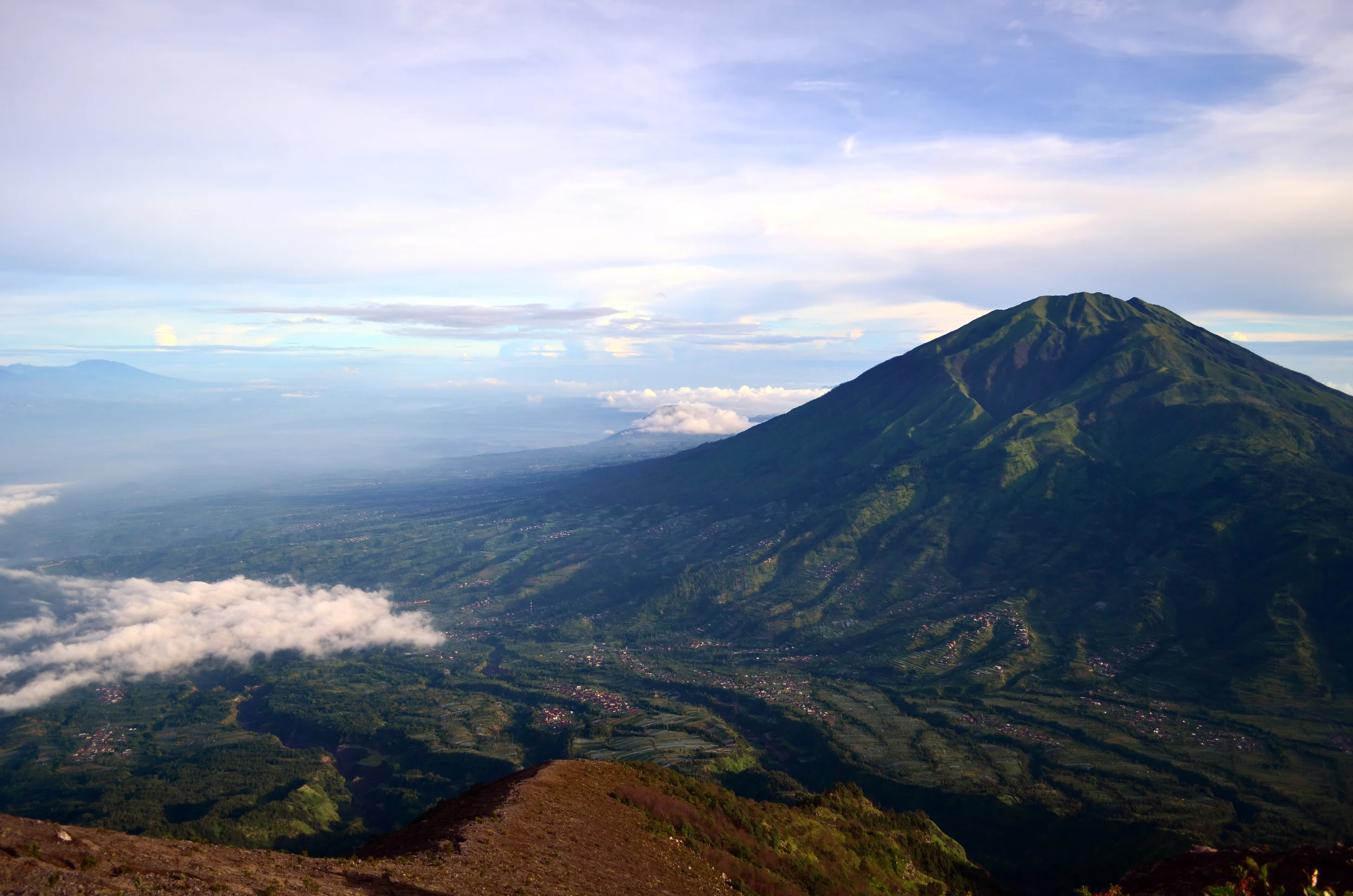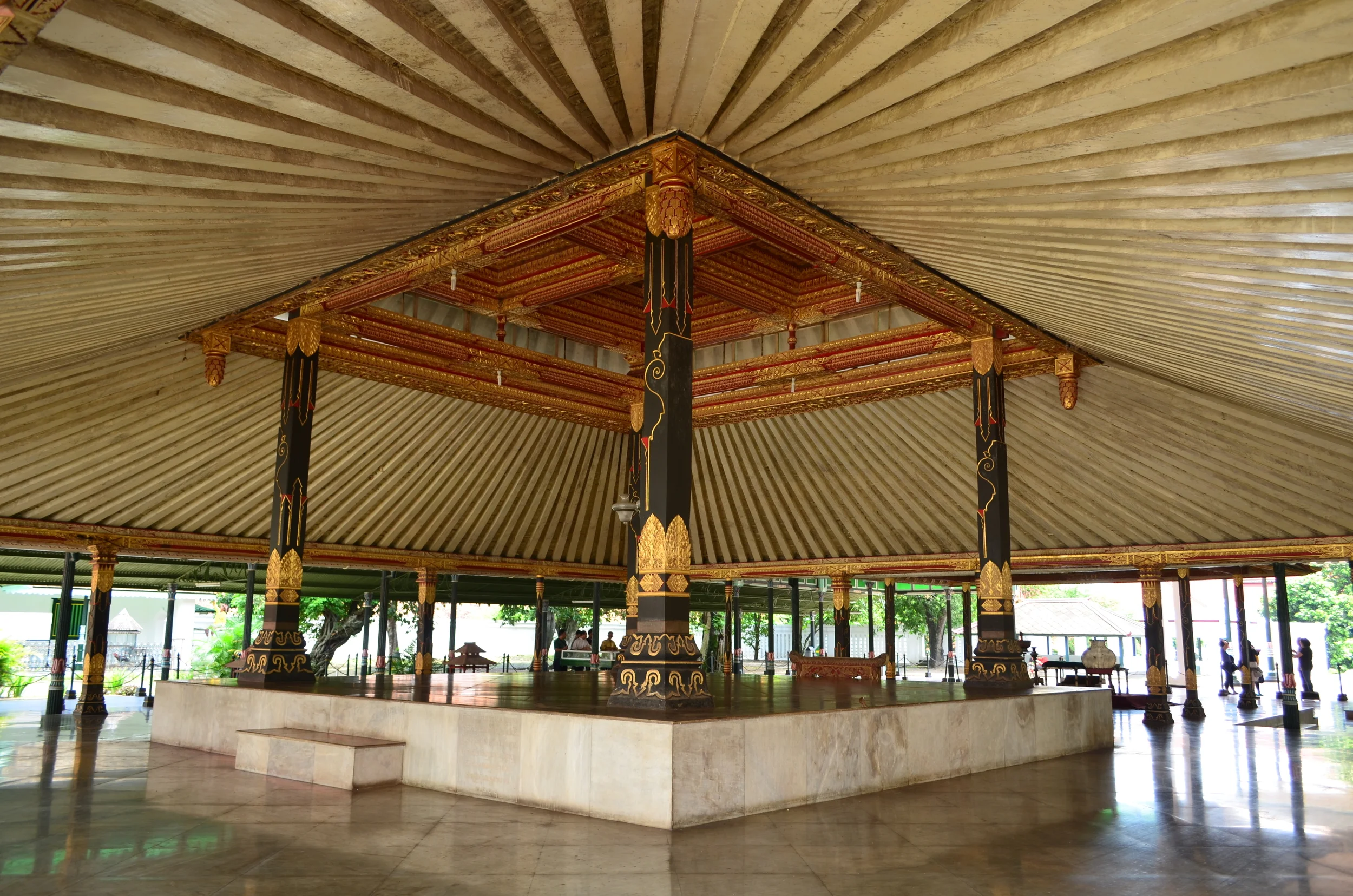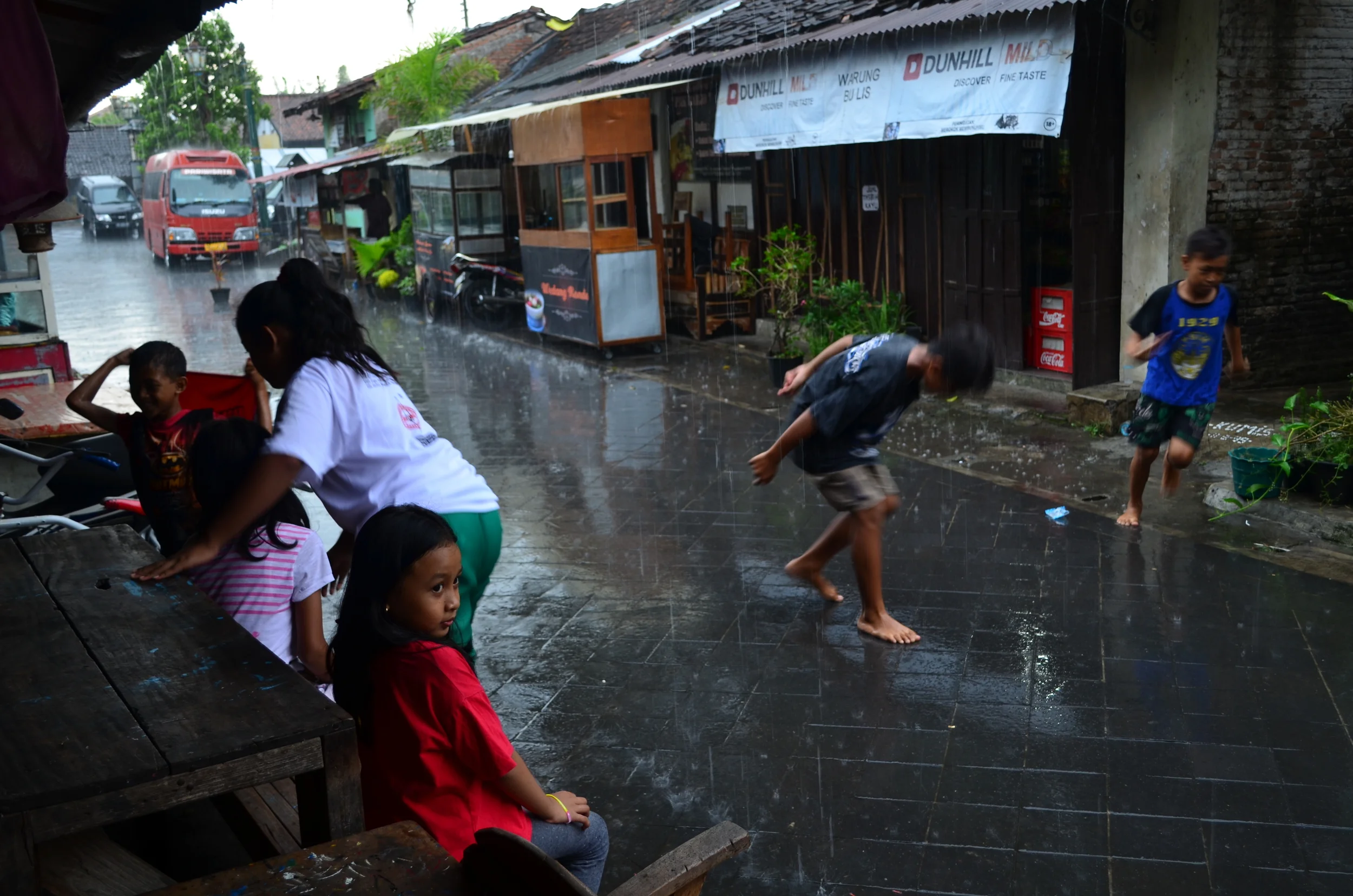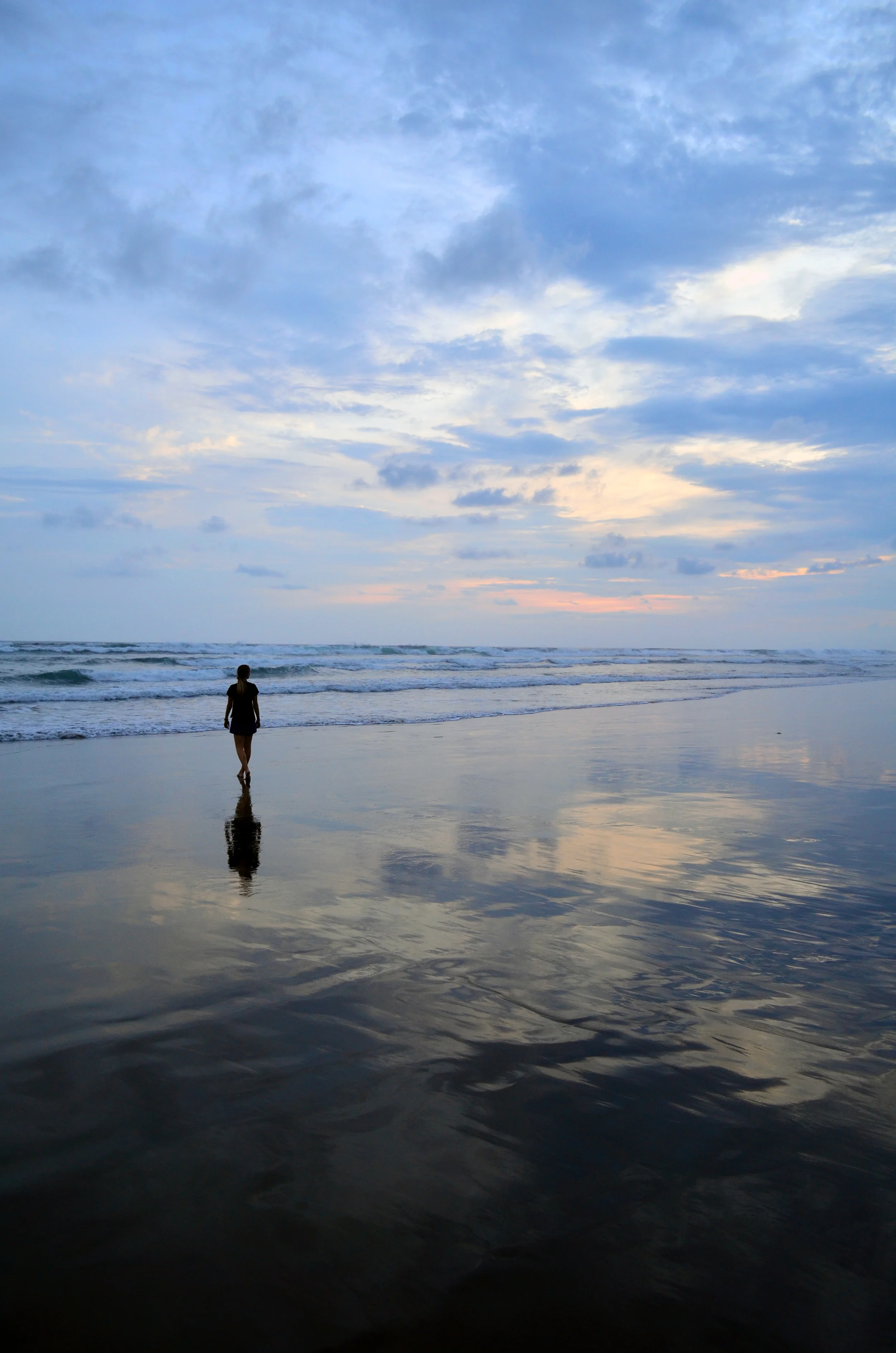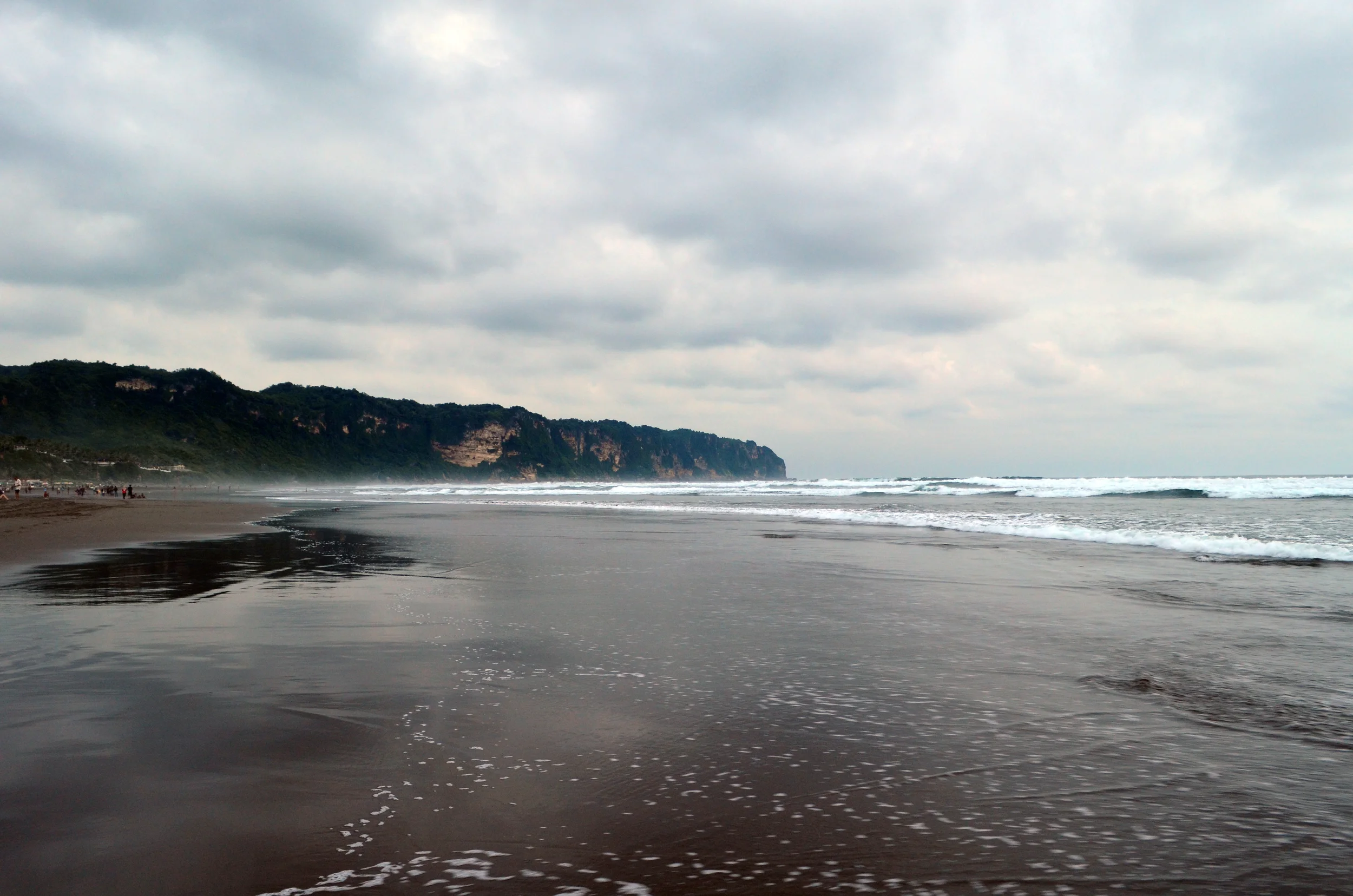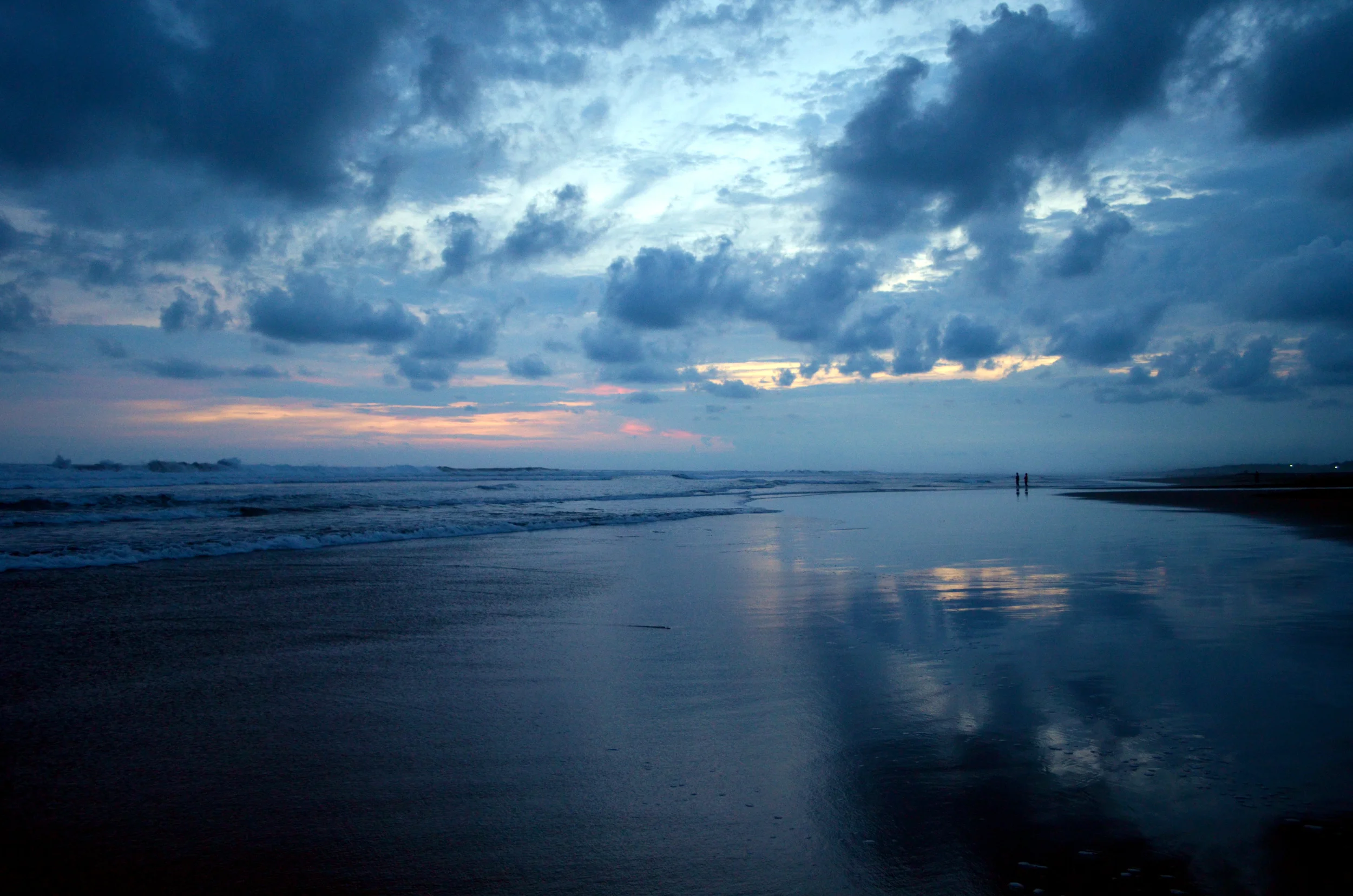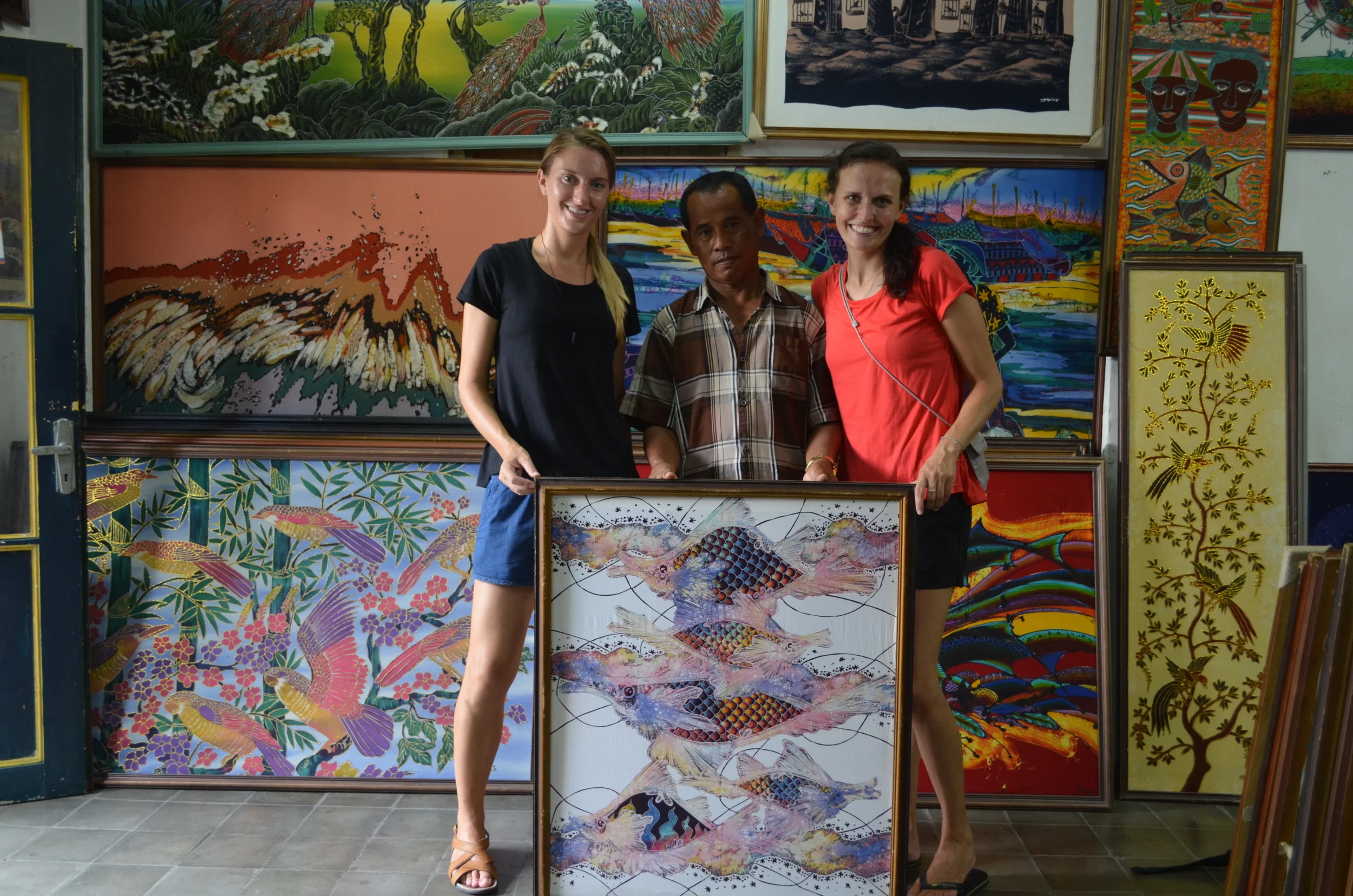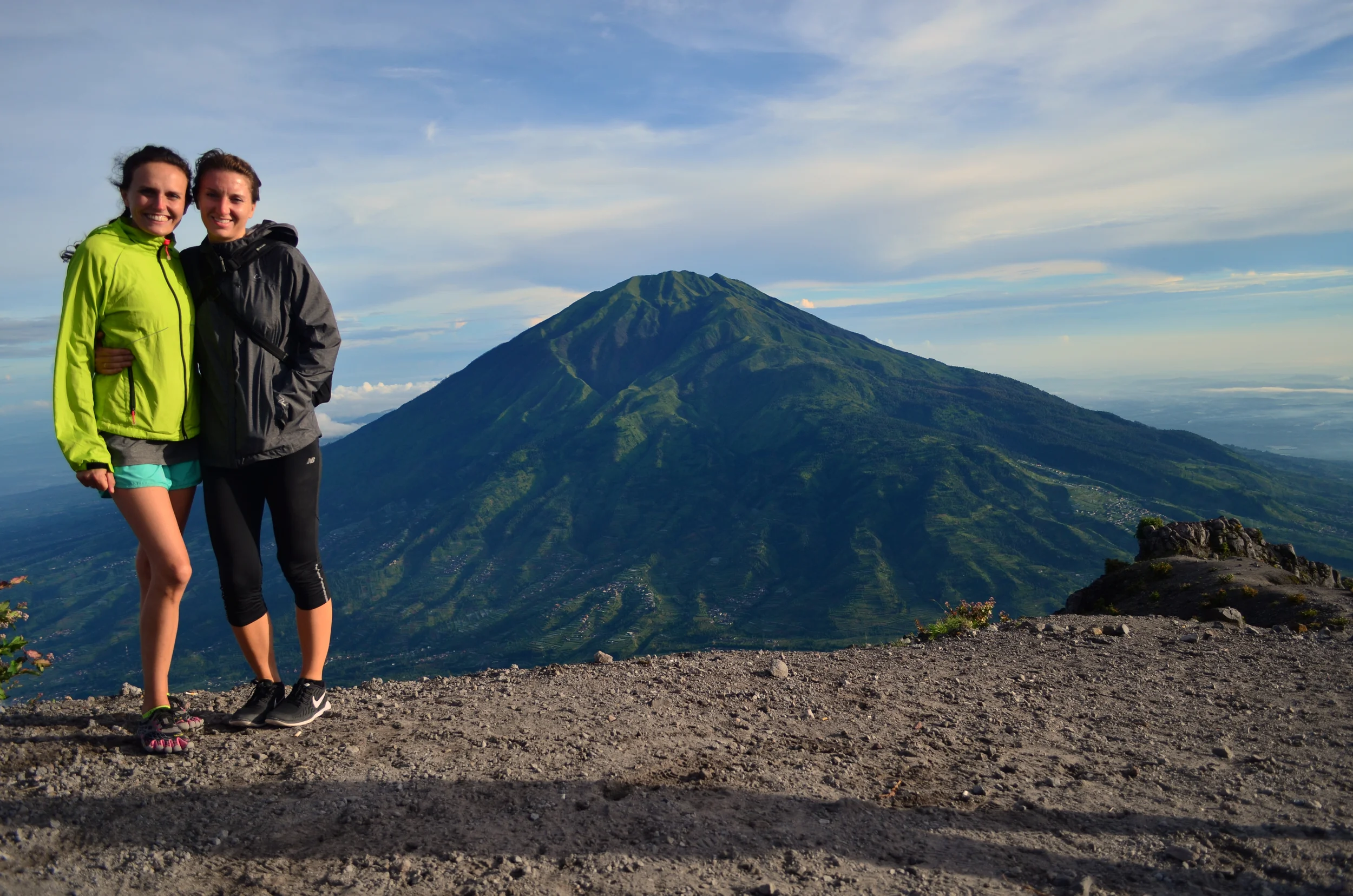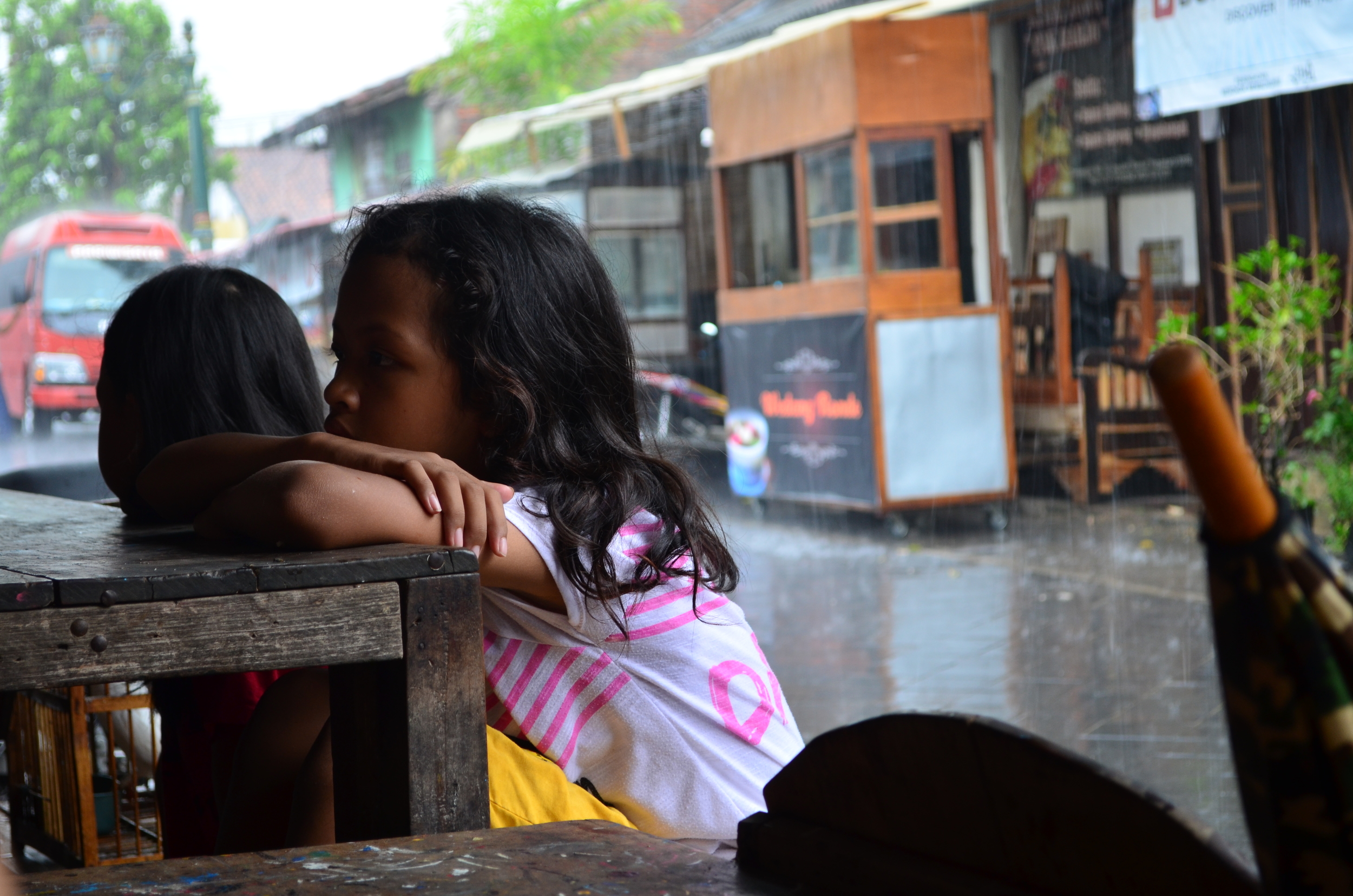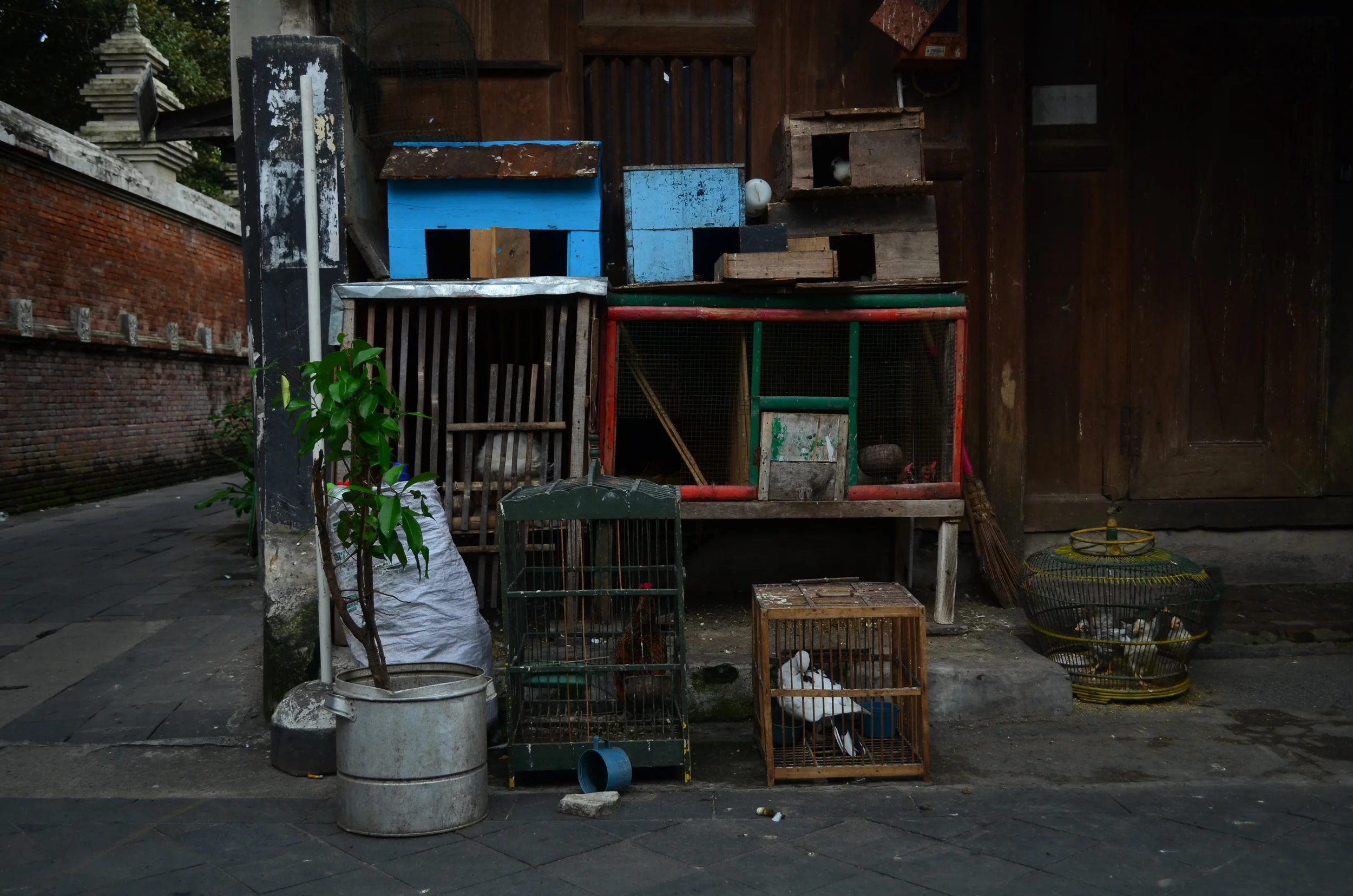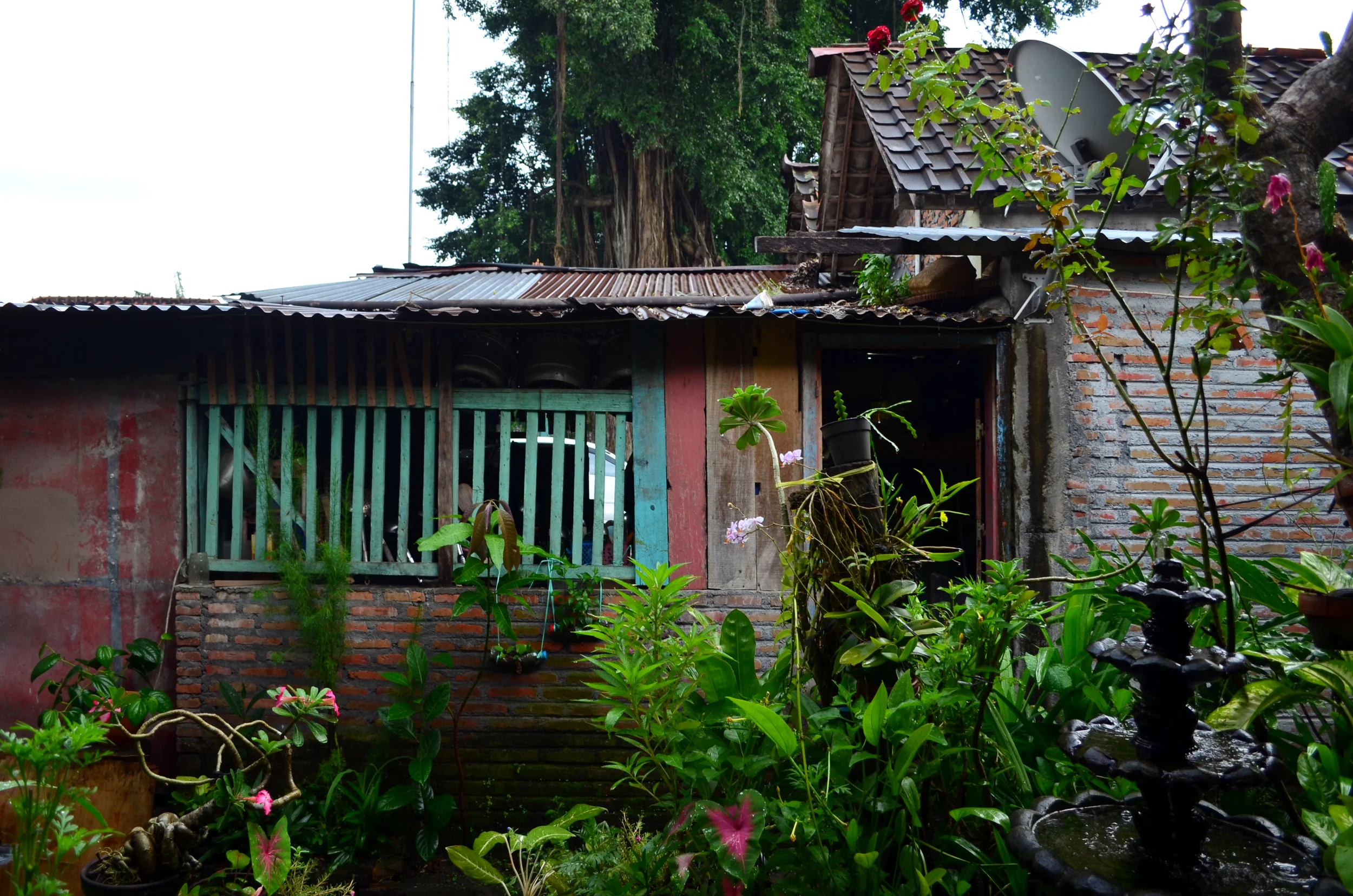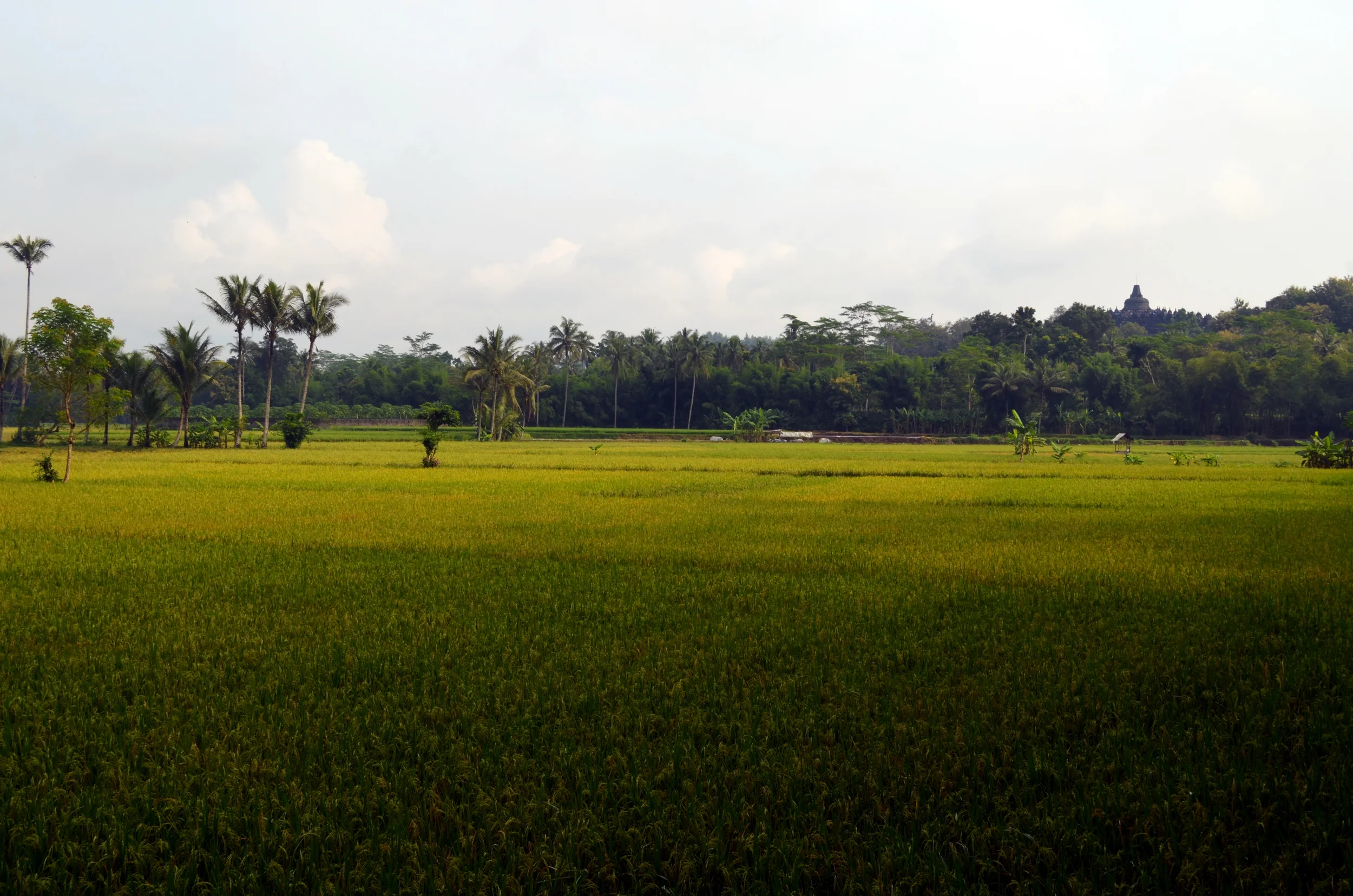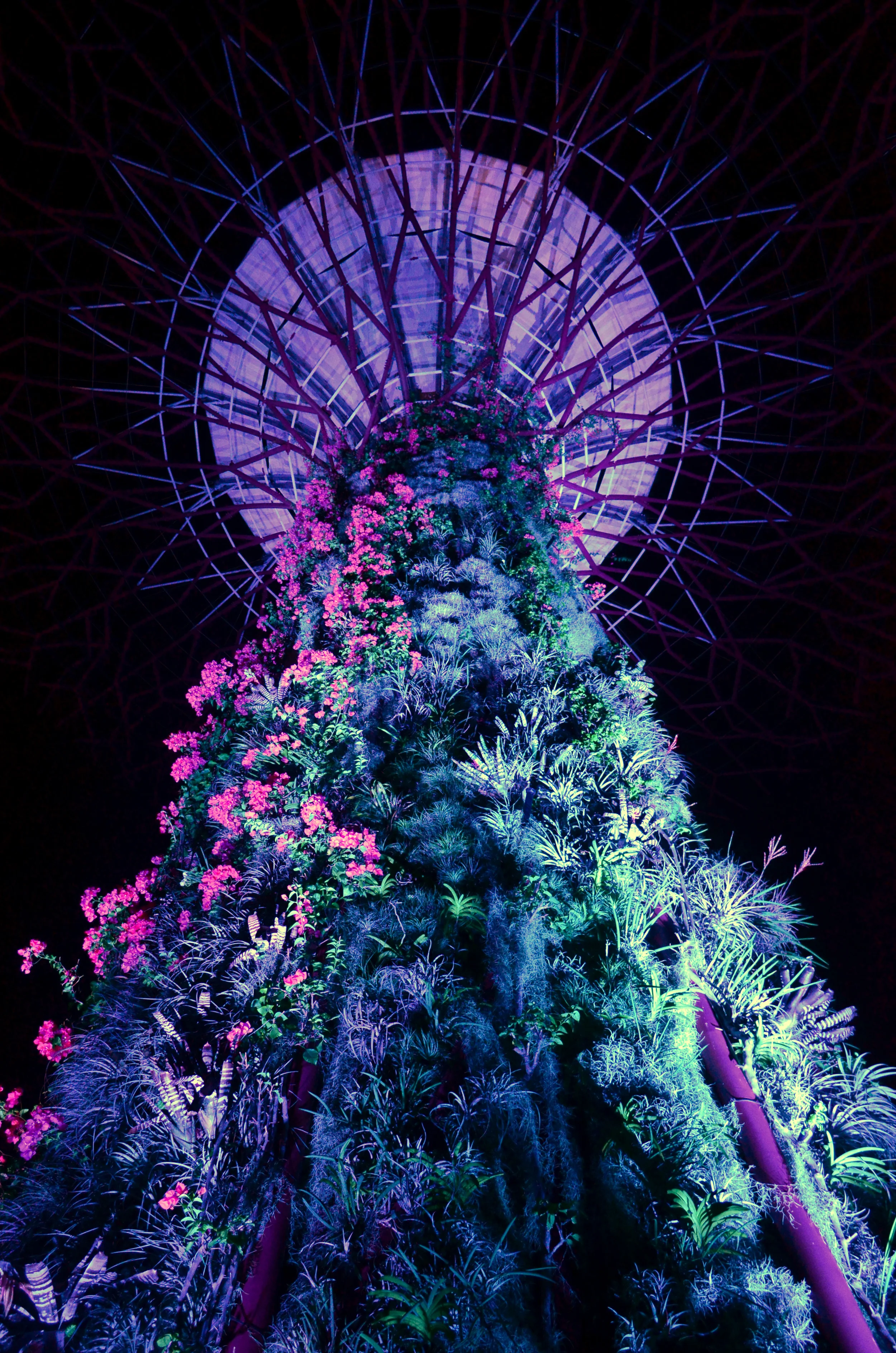Jogja, or More Appropriately, Middle Earth
Yogyakarta, Indonesia
Greatest Moment: In just a four day period, we witnessed the most exotic landscape yet. We walked through volcanic rock, drove past endless rice fields, played on the black sand beach, and traveled through farmland and jungle. Our first night in Indonesia we hopped on the band-wagon to climb the Merapi Volcano. Merapi was not even in our radar before we entered Indonesia, but we found out quickly that locals here consider it an incredible feat and accomplishment. Instantly we were intrigued, and decided to climb it. We left at 10pm, arriving at a village at the base of the volcano. At 1am we began climbing, and the view was already breathtaking. Dark masses of nearby volcanoes loomed menacingly, and we imagined ourselves climbing Mount Doom. It was in fact very Lord-of-the-Ring-esque, as heat lightening burst periodically throughout the sky as we continued toward the top just in time for sunrise.
Even now, days later, we marvel at the experience. From the top peak we sat on the narrow ridge that had immense drops on either side. One was the steep side of the volcano that we climbed up, of large jutting rocks and coarse sands, and the other was the wide volcanic crater. A cloud sat in the crater as we arrived, as if sleeping there before sunrise. We could see nothing but the eerie wisps of white fluff. As the sun came up, we saw distant mountain tops and a valley of volcanoes. The active volcanoes, like the one we were on, were a brown, dull, protruding mass in the clouds, while the inactive volcanoes were vibrantly green with vegetation. We saw a little bit of the villages that skirt the base of these volcanoes, but mainly the ground was obscured by the sheet of clouds that hung low beneath us. We couldn’t remember a time that we sat above the clouds, other than flying.
Worst Moment: Merapi Volcano was an incredible experience, and we are focusing primarily on that. It was, however, the most difficult and treacherous hike we have ever done. The way up was a constant and steep incline, just before the very top it got to 80%. It was during this vertical part that Kathy, terrified of heights and seeing nothing beneath her but endless rocks, began to have an anxiety attack, and Jamie fearful of the sand slides that dropped into a rocky valley. It was the most unsafe thing, and once again, we said “Never would this be allowed in America”!
The way down proved to be as much of a trial as the way up. Our ACLs screamed in protest at the sharp decline, and the small pebbles that littered the trail gave way to us sliding and falling on our butts repeatedly. It was obnoxious, and poor Jamie landed on her still-recovering elbow. Our feet and legs ached from the 8 hour trek, more than we would like to admit.
Lesson Learned: It is common for us to talk of the countries we have visited or will visit. Not just to other backpackers, but the local people as well. They are so used to travelers, and it is an easy conversation piece (especially in Java, where English is not strong). However, as much as we banter on of our travel, the conversation is one sided. Local people here have hardly traveled their own country, and we quickly become conscious of not flaunting our circumstances too much. They say Bali is beautiful, but they have only heard of it. To us, a $50 flight from Jogja to Bali is doable for most people, but not most people here. In Singapore, we met women from the Philippines who were traveling there for the first time. It makes us think, how silly we must look in the eyes of different countries, worrying about internet availability and the tedious days of travel. It, all of it, is a luxury.
Cultural Insight: We learned about Batik art, which is an Indonesian and Malaysian style of art that was originally used for sarongs and clothing. “Ba” means Many, and “tik” means dots. In Java, where we are at, this craft is an ancient tradition and is still considered the place where the finest batik art can be produced. Using a pipe looking instrument, dye sits in a tiny bowl and supplies the end that contacts the fabric. The many dots combine to make beautiful lines and mimics brushstrokes. Wax is applied prior to adding the dye and the parts that are covered in wax, resist the dye. The dye and wax sit for one hour, it the the wax is melted off. This is a very long process, as you can imagine, as most of the art is very colorful and intricate. Batik art is now primarily used for décor, as there are faster ways of producing clothing now. Where we were at, the work place showed that he used the tradition method of making the art displayed there. It was incredible the detail and design they could do with the time consuming process, and we immediately fell in love with one particular piece that will accompany us back home!
DETAILS OF YOGYAKARTA







